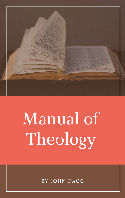CONTENTS
| PAGE | ||||||||
| PREFACE | vii | |||||||
| CHAP. | ||||||||
| I. | HISTORICAL METHOD | 1 | ||||||
| II. | PAGAN MYSTERY PLAYS | 81 | ||||||
| III. | THE ARGUMENT FROM SILENCE | 96 | ||||||
| IV. | THE EPISTLES OF PAUL | 125 | ||||||
| V. | EXTERNAL EVIDENCE | 154 | ||||||
| VI. | THE ART OF CRITICISM | 167 | ||||||
| VII. | DR. JENSEN | 202 | ||||||
| EPILOGUE | 214 | |||||||
| INDEX | 227 | |||||||
[vii]
[Contents]
PREFACE
This little volume was written in the spring of the year 1913, and is intended as a plea for moderation and good sense in dealing with the writings of early Christianity; just as my earlier volumes entitled Myth, Magic, and Morals and A History of New Testament Criticism were pleas for the free use, in regard to the origins of that religion, of those methods of historical research to which we have learned to subject all records of the past. It provides a middle way between traditionalism on the one hand and absurdity on the other, and as doing so will certainly be resented by the partisans of each form of excess.
The comparative method achieved its first great triumph in the field of Indo-European philology; its second in that of mythology and folk-lore. It is desirable to allow to it its full rights in the matter of Christian origins. But we must be doubly careful in this new and almost unworked region to use it with the same scrupulous care for evidence, with the same absence of prejudice and economy of hypothesis, to [viii]which it owes its conquests in other fields. The untrained explorers whom I here criticize discover on almost every page connections in their subject-matter where there are and can be none, and as regularly miss connections where they exist. Parallelisms and analogies of rite, conduct, and belief between religious systems and cults are often due to other causes than actual contact, inter-communication, and borrowing. They may be no more than sporadic and independent manifestations of a common humanity. It is not enough, therefore, for one agent or institution or belief merely to remind us of another. Before we assert literary or traditional connection between similar elements in story and myth, we must satisfy ourselves that such communication was possible. The tale of Sancho Panza and his visions of a happy isle, over which he shall hold sway when his romantic lord and master, Don Quixote, has overcome with his good sword the world and all its evil, reminds us of the naïf demand of the sons of Zebedee (Mark x, 37) to be allowed to sit on the right hand and the left of their Lord, so soon as he is glorified. With equal simplicity (Matthew xix, 28) Jesus promises that in the day of the regeneration of Israel, when the Son of Man takes his seat on his throne of glory, Peter and his companions shall also take their seats on twelve thrones to judge the twelve tribes of Israel. The projected [ix]mise en scène is exactly that of a Persian great king with his magnates on their several “cushions” of state around him. There is, again, a close analogy psychologically between Dante’s devout adoration of Beatrice in heaven and Paul’s of the risen Jesus. These two parallels are closer than most that Mr. Robertson discovers between Christian story and Pagan myth, yet no one in his senses would ever suggest that Cervantes drew his inspiration from the Gospels or Dante from the Pauline Epistles. In criticizing the Gospels it is all the more necessary to proceed cautiously, because the obscurantists are incessantly on the watch for solecisms—or “howlers,” as a schoolboy would call them; and only too anxious to point to them as of the essence of all free criticism of Christian literature and history.
Re-reading these pages after the lapse of many months since they were written, I have found little to alter, though Prof. A. C. Clark, who has been so good as to peruse them, has made a few suggestions which, where the sheets were not already printed, I have embodied. I append a list of errata calling for correction.
Fred. C. Conybeare.
March 1, 1914.

 Ministerial Requirement Not Covetous
Ministerial Requirement Not Covetous

